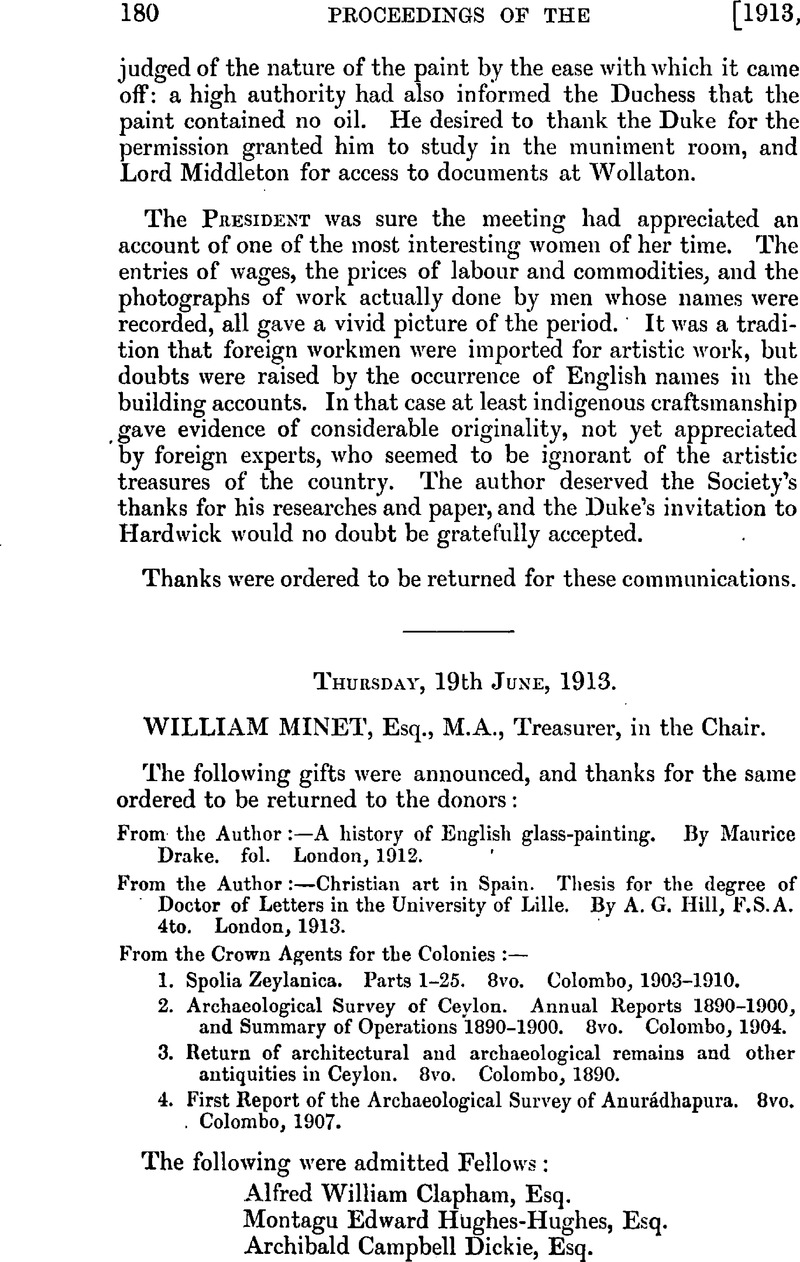No CrossRef data available.
Published online by Cambridge University Press: 10 May 2010

page 181 note 1 Proceedings, xx. 276.
page 183 note 1 Proceedings, xx. 276.
page 184 note 1 Proceedings, x. 36; V.C.II. Beds., i. 185.
page 184 note 2 Proceedings, 2nd ser., i. 399; further finds in vi. 36 and xi. 311 (Wickheru field, adjoining Toddington Hill).
page 184 note 3 Grave-mounds and their Contents, 272, fig. 451.
page 186 note 1 V.C.H. Beds., vol. i, coloured plate of Anglo-Saxon remains, figs. 11 and 13.
page 186 note 2 Both methods are illustrated in Saxon Obsequies, p1. 14, graves 158, 168 ; cf. pl. 13, grave 144.
page 187 note 1 This reference to Professor Oman's view I owe to Mr. Page.
page 188 note 1 England before the Norman Conquest, pp. 230, 245.
page 190 note 1 This fact is expressly stated in the account given in the Isle of Wight County Press (Sept. 2, 1899), and I have verified it by numerous inquiries.
page 190 note 2 This is a hoary fiction that takes a lot of killing. It is flatly contradicted by the results of careful excavations, which prove that exposure to the air, so far from causing bones to crumble, actually hardens them ! It is not the exposure to the air which destroys the bones, but the method of exposing them, and the methods of treasure-seekers always are destructive.
page 190 note 3 September 2, 1899.
page 190 note 4 Formerly occupier of Sheepwash Farm.
page 192 note 1 These presumably are the ‘Greco-Phoenician characters’ referred to bf Robert Walker in his letter to the I. W. County Press (Dec. 30, 1899).
page 192 note 2 Cf. Proceedings, xxiii. 128, for this setting of the handles.